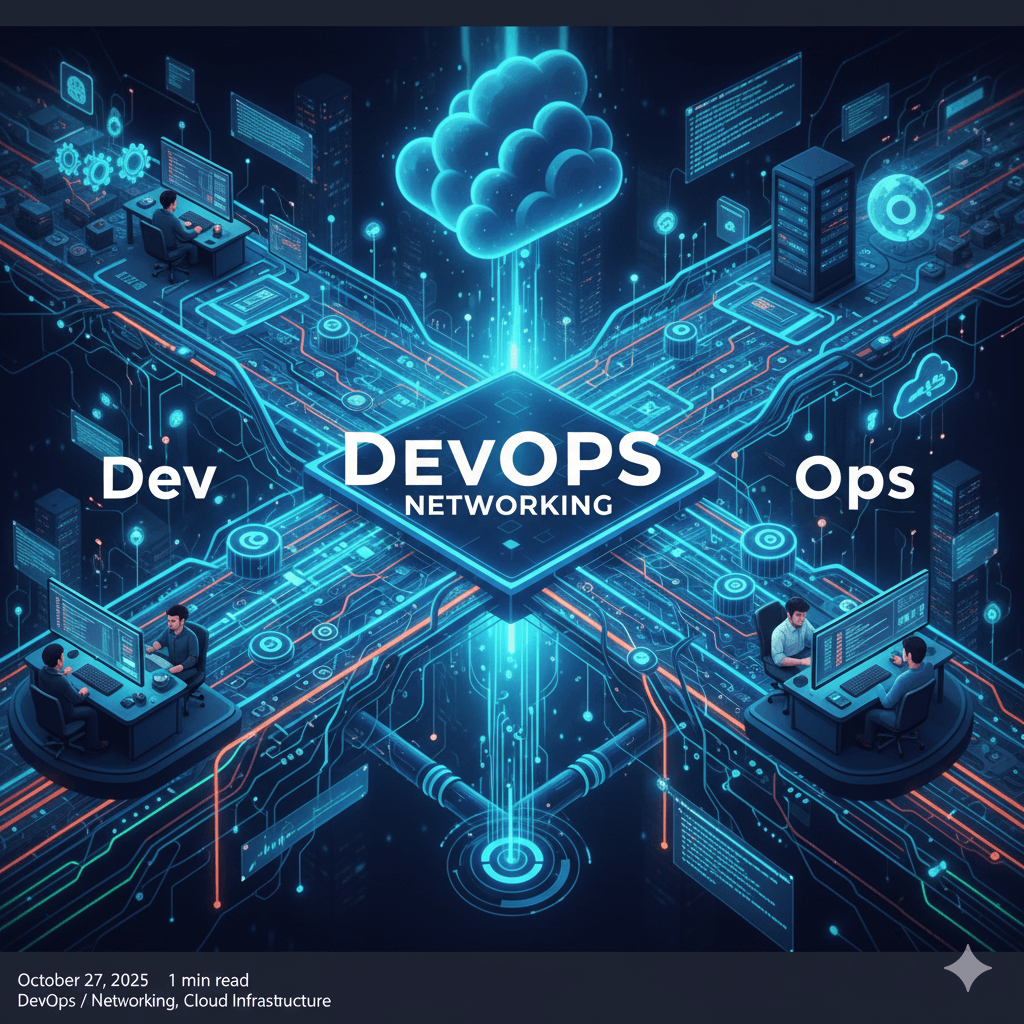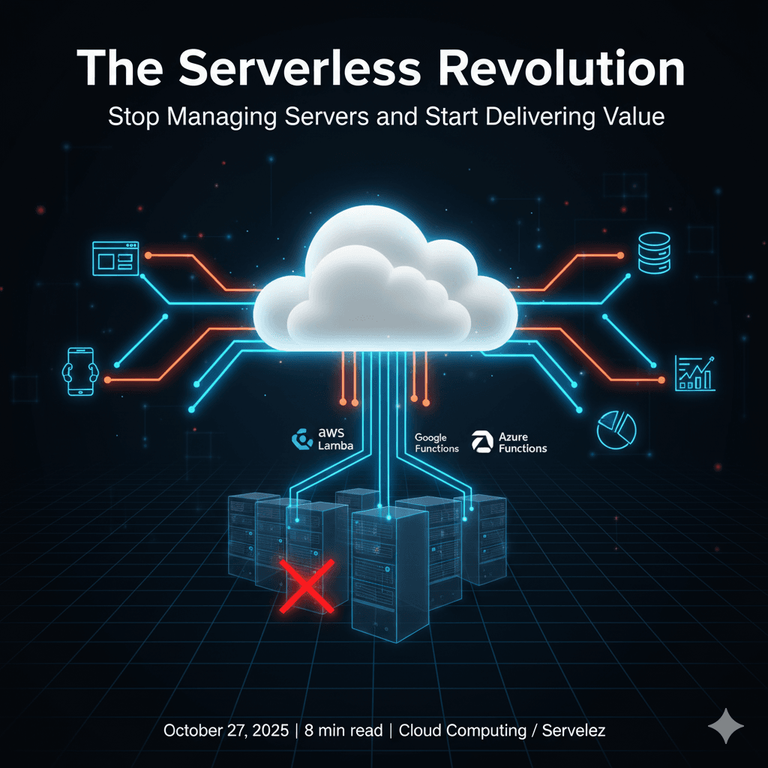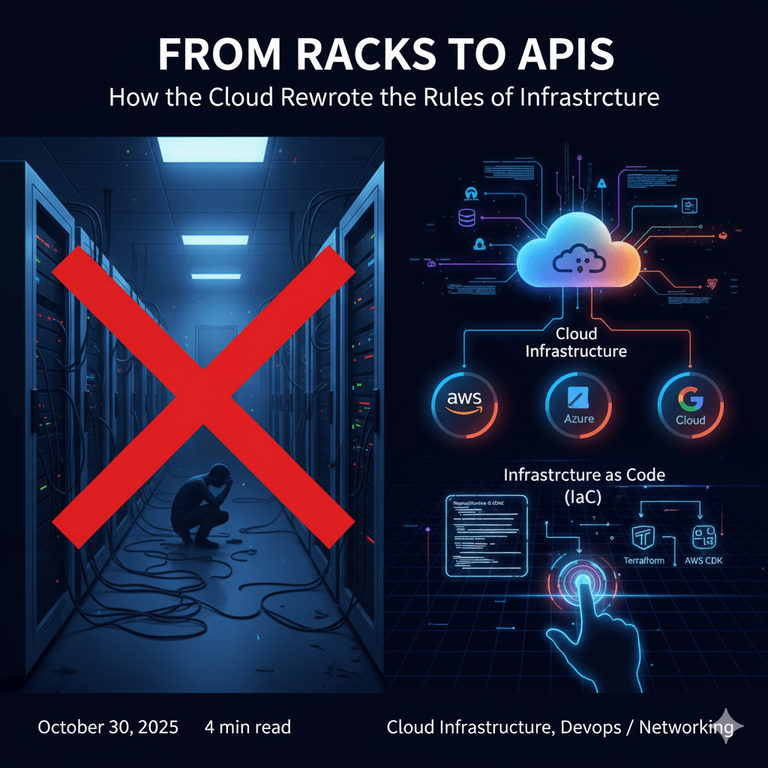Beyond the Code: How Modern Networking Fuels High-Speed DevOps
DevOps and networking work hand-in-hand to streamline software pipelines, improve reliability, and ensure secure, scalable communication across environments.

In today's fast-paced digital landscape, the speed and efficiency of software delivery can make or break a business. DevOps has revolutionized this process by breaking down silos between development and operations teams. By automating everything from testing to deployment, DevOps helps organizations ship better software, faster.
However, there's a critical, often-overlooked hero in this story: networking.
Modern applications are not monolithic; they are distributed systems composed of microservices, containers, and cloud resources that constantly communicate. Without a robust, automated, and secure network, even the most efficient DevOps pipeline will grind to a halt. True agility is achieved when networking and DevOps work in perfect harmony.
The Problem: When Networking is an Afterthought
Traditionally, networking has been a manual, ticket-based process. A developer might have to wait days for a new firewall rule, a load balancer configuration, or a virtual network to be set up. This friction creates significant bottlenecks in the CI/CD (Continuous Integration/Continuous Deployment) pipeline, undoing the very efficiencies DevOps aims to create.
This disconnect can lead to:
- Deployment Delays: Manual network configurations slow down the entire delivery process.
- Inconsistent Environments: Differences between development, testing, and production network setups can cause applications to fail unexpectedly.
- Security Risks: Manual processes are prone to human error, potentially leaving security vulnerabilities in the network configuration.
The Solution: Integrating Networking into the DevOps Workflow
The solution is to treat your network just like you treat your application code—a practice known as Infrastructure as Code (IaC). By defining network resources in code, teams can automate their provisioning, configuration, and management.
Here’s how modern tools and practices are bridging the gap:
1. Automation with Infrastructure as Code (IaC)
Tools like Terraform and AWS CloudFormation allow developers and network engineers to define network components—such as Virtual Private Clouds (VPCs), subnets, and routing tables—in simple, human-readable files. This code can be version-controlled, tested, and integrated directly into the CI/CD pipeline.
For example, here is a simple Terraform snippet to define an AWS VPC and a public subnet. This code can be run automatically in a pipeline to create a consistent network environment every single time.
Terraform Example: Defining an AWS VPC and Subnet
# main.tf
# Define the provider (AWS)
provider "aws" {
region = "us-east-1"
}
# Create a new Virtual Private Cloud (VPC)
resource "aws_vpc" "main" {
cidr_block = "10.0.0.0/16"
tags = {
Name = "production-vpc"
}
}
# Create a public subnet within the VPC
resource "aws_subnet" "public" {
vpc_id = aws_vpc.main.id
cidr_block = "10.0.1.0/24"
map_public_ip_on_launch = true
tags = {
Name = "production-public-subnet"
}
}- Benefit: When a new feature is deployed, the pipeline can automatically provision the exact network environment it needs, ensuring consistency and eliminating manual effort.
2. Containerization and Orchestration
Technologies like Docker and Kubernetes have transformed how we deploy applications. Kubernetes, for example, handles complex networking tasks like service discovery, load balancing, and network policy enforcement automatically.
Developers can define how their application should be exposed to the network using a Kubernetes Service manifest. This abstracts away the underlying infrastructure. The following YAML file defines a Deployment to run three instances of an NGINX web server and a Service to expose it to external traffic via a load balancer.
Kubernetes Example: Defining a Deployment and a Service
# deployment.yaml
# Define the application deployment
apiVersion: apps/v1
kind: Deployment
metadata:
name: nginx-deployment
spec:
replicas: 3
selector:
matchLabels:
app: nginx
template:
metadata:
labels:
app: nginx
spec:
containers:
- name: nginx
image: nginx:latest
ports:
- containerPort: 80
# Define the network service to expose the deployment
apiVersion: v1
kind: Service
metadata:
name: nginx-service
spec:
# Expose the service externally using a cloud load balancer
type: LoadBalancer
selector:
# Route traffic to pods with the label "app: nginx"
app: nginx
ports:
- protocol: TCP
port: 80 # Port exposed on the load balancer
targetPort: 80 # Port on the pods/containers- Benefit: A developer simply applies this file to the cluster (kubectl apply -f deployment.yaml), and Kubernetes automatically provisions a network load balancer and configures it to send traffic to the NGINX containers, no matter which nodes they are running on.
3. Enhancing Security with DevSecOps
Integrating networking into DevOps is a cornerstone of DevSecOps, which embeds security into every stage of the software lifecycle. By defining network security rules (like firewall policies and access controls) as code, teams can automate security validation.
- Benefit: Security checks can be run automatically with every code commit, catching potential vulnerabilities long before they reach production. This makes the network more secure and frees up security teams to focus on higher-level strategy.
Bringing It All Together: A Modern CI/CD Pipeline in Action
- Commit: The code is committed to a Git repository, which includes both the application code and the Terraform/Kubernetes manifests.
- CI Pipeline: A tool like Jenkins or GitLab CI automatically tests the code.
- Infrastructure Provisioning: The pipeline executes the Terraform code, creating a fresh, isolated test environment in the cloud, complete with its own AWS VPC and security group rules.
- Deployment: The application is containerized and deployed to a Kubernetes cluster within the newly created network by applying the Kubernetes YAML manifests.
- Testing: Automated tests run against the deployed application's public endpoint.
- Destroy: Once the tests are passed and the code is merged, the pipeline runs terraform destroy to automatically tear down the temporary network environment, saving costs.
The Future is Collaborative
The era of siloed teams is over. For modern software delivery to succeed, network engineers and developers must collaborate, sharing tools and processes. By embracing automation and an "as-code" philosophy, organizations can build CI/CD pipelines that are not just faster, but also smarter, more resilient, and inherently more secure.
Learn More:
Explore how to implement Infrastructure as Code with Terraform.
Discover container orchestration with the official Kubernetes documentation.


